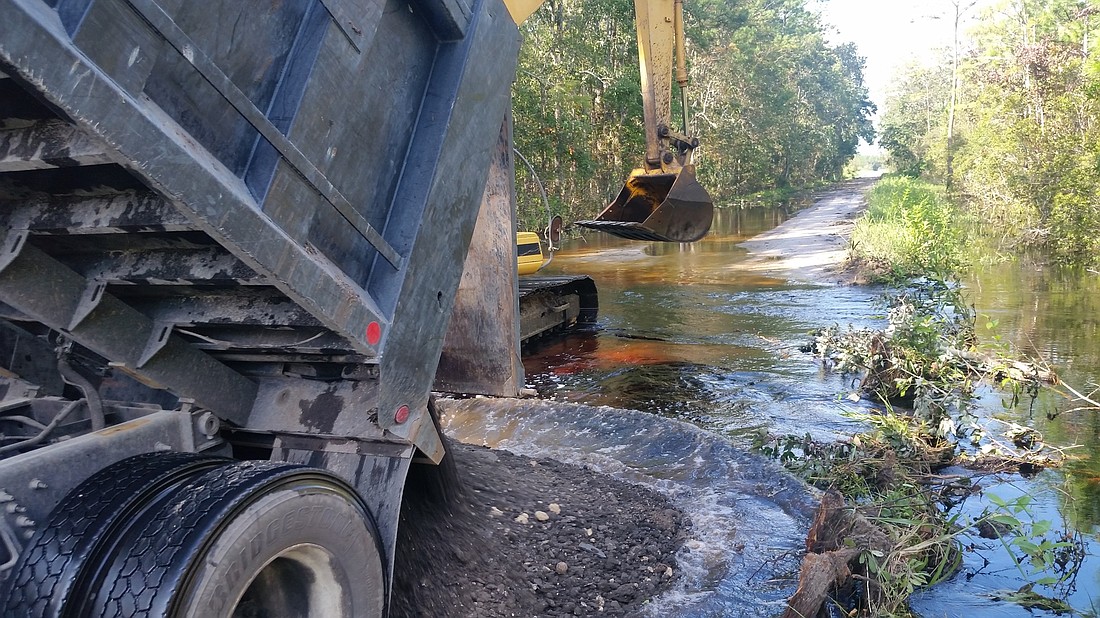- January 23, 2025
-
-
Loading

Loading

After Hurricane Matthew, the city of Palm Coast studied its response and made fixes before Hurricane Irma. Still, a few things went wrong: Residents quickly depleted the city's sandbag supplies before the storm; drivers stayed out on the roads during curfew hours before and after the storm, hindering first responders; and a washout temporarily kept city government vehicles from getting to city wellfields.
"We implemented some changes from what we learned in Matthew, and some of those were very successful," City Manger Jim Landon told City Council members in a presentation at the council's Nov. 28 workshop. "And then we also evaluate what we’ve done with each one of those, and we’ve done that with Hurricane Irma."
The city had replied on estimates from previous storms in order to figure out how many sandbags and how much sand to buy for residents to use to barricade their homes from flooding. It brought 20,000 sand bags, but by five days before impact, they were gone. The city had to buy 25,500 more.
Now it's recommending both buying more sandbags ahead of time and limiting bags to 12 bags per family. The city should also deploy staff to sandbag locations to help residents fill up, said Beau Falgout, the city's administrative services and economic development director.
"With the demand we had this time, we really needed to staff up more," Falgout said. "It's all a matter of being prepared for a big push."
The city is also hoping to better inform the public about the reasons for pre- and post-storm curfews, in the hope that residents who understand the rationale will be more likely to take the curfew seriously.
"The curfew, I think, is important, and I’m not sure that was relayed enough to our residents and why it was so significant," city Deputy Fire Chief Jerry Forte said.
Fire Chief Mike Beadle said that when rescuers headed out the morning after the storm, they saw residents driving on the roads in the early morning hours, well before the roads had been cleared and the curfew lifted.
A deputy stopped one man and asked him why he was out, and the man replied that he was bored and wanted to see the neighborhood.
The city also would have benefitted from hyper-local, pinpoint weather monitoring information, Forte told council members. There was enough variation in weather across the county as the storm moved through that weather information from stations in Flagler Beach and Bunnell didn't give emergency staff at fire stations in Palm Coast the information that they needed on pressure and wind speed in the immediate area.
The city hopes to add monitoring equipment at its fire stations so crews can see, for instance, if winds are too high for emergency crews to go out safely.
After the storm, the city had trouble getting — and keeping — debris hauling contractors.
"Really, the (debris hauling) resources were stretched over multiple states over a long period of time," Landon said. "The national resources are the most effective at picking up debris. ... They're the most capable, at the lowest cost."
But working without prearranged contracts, contractors can also walk off a job without notice if they find out there's more money to be had elsewhere.
"These people are very frustrating to deal with, because they know you need them and they literally threaten you: 'If you let your public works crew in this neighborhood, then we’re leaving.' … They want the whole neighborhood. The problem with that is it takes twice as long; the residents want it picked up today."
City public works crews "probably took out half of our debris," Landon said.
To view the city's draft after-action report on Hurricane Irma, go to http://bit.ly/2jtTLUO.